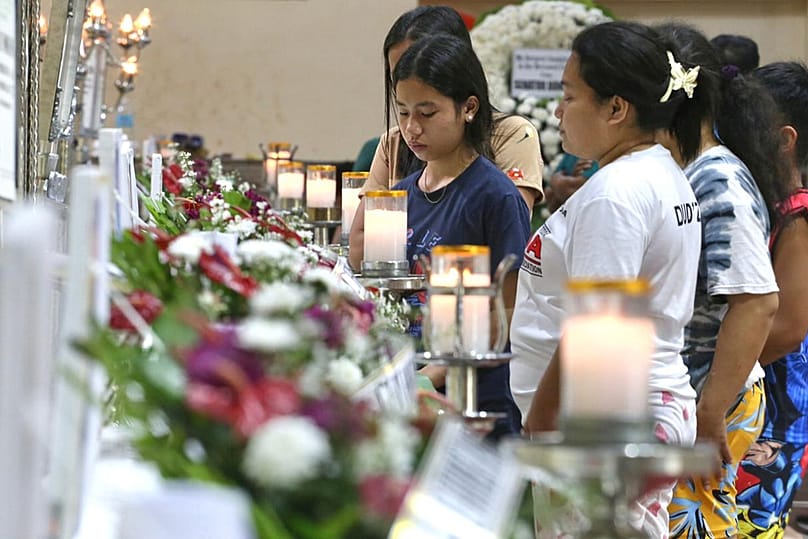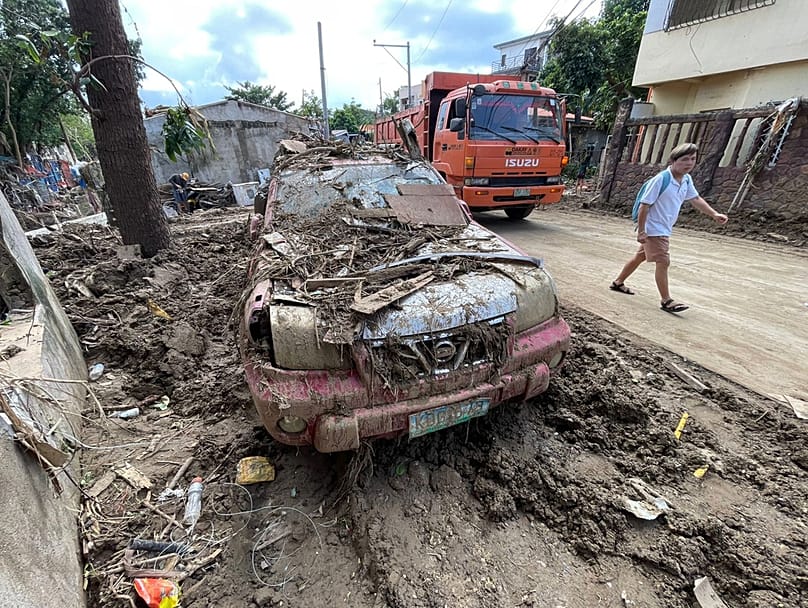Defence Secretary Gilberto Teodoro Jr has urged people to evacuate as Super Typhoon Fung-wong threatens the Philippines with winds up to 230 km/h, following Typhoon Kalmaegi's devastation.
Super Typhoon Fung-wong, the most significant storm to threaten the Philippines this year, started battering the country’s northeastern coast ahead of landfall on Sunday, knocking down power and forcing the evacuation of nearly a million people.
Philippine Defence Secretary Gilberto Teodoro Jr issued a warning to many people in affected areas, urging them to evacuate to safety from high-risk villages before it’s too late.
Fung-wong, which could cover two-thirds of the Southeast Asian archipelagic nation of more than 7,600 islands, with its 1,600-kilometre-wide rain and wind span, approached from the Pacific while the Philippines was still reeling from the devastation caused by Typhoon Kalmaegi, which struck last week.
Kalmaegi left at least 224 people dead in the central island provinces on Tuesday before pummelling Vietnam, where at least five more were killed. The storm was the strongest on record to hit Asia this year.
Philippine President Ferdinand Marcos Jr. has declared a state of emergency due to the extensive devastation caused by Kalmaegi and the expected calamity from Fung-wong, which is called ‘Uwan’ in the Philippines.
Fung-wong, with winds of up to 185 kilometres per hour and gusts of up to 230 kilometres per hour, was spotted by government forecasters before noon on Sunday local time, over coastal waters near the town of Pandan in the eastern Catanduanes province.
The area is already dealing with torrential rains and heavy fog that has obscured visibility, even before the typhoon made landfall. Experts predict Fung-wong to move northwest and make landfall on the coast of Aurora or Isabela province late on Sunday or early Monday.
Tropical cyclones with sustained winds exceeding 185 kilometres per hour are categorised in the Philippines as super typhoons, a designation adopted years ago to underscore the urgency of more extreme weather events.
More than 916,860 people were evacuated from high-risk villages in northeastern provinces, including in Bicol, a coastal region vulnerable to Pacific cyclones and mudflows from Mayon, one of the country’s most active volcanoes.
Teodoro Jr., who oversees the country’s disaster response agencies and the military, warned about the potentially catastrophic impact of Fung-wong in televised remarks made on Saturday.
He said the storm could affect vast swathes of the country, including Cebu, the central province hit hardest by Typhoon Kalmaegi, and even metropolitan Manila. This densely populated capital region hosts government institutions and financial centres.
More than 30 million people could be exposed to hazards posed by Fung-wong, according to the Philippine Office of Civil Defence.
The defence chief asked people to follow orders by officials to immediately evacuate from areas prone to flash floods, landslides and coastal tidal surges.
“We need to do this because when it’s already raining or the typhoon has hit and flooding has started, it’s hard to rescue people,” Teodoro said.
As Fung-wong approaches with its wide band of fierce wind and rain, several eastern towns and villages lose power. Authorities in northern provinces, to be hit or sideswiped by Fung-wong, pre-emptively declared the shutdown of schools and most government offices on Monday and Tuesday.
At least 325 domestic and 61 international flights have been cancelled over the weekend and into Monday, and more than 6,600 commuters and cargo workers were stranded in at least 109 seaports, where the coast guard prohibited ships from venturing into rough seas.
The Philippines is battered by about 20 typhoons and storms each year. The country is also often hit by earthquakes and has more than a dozen active volcanoes, making it one of the world’s most disaster-prone countries, a situation that has been gradually worsening due to the effects of climate change.
The Philippines has not called for international help following the devastation caused by Kalmaegi. However, Teodoro said the US – the country’s longtime ally – and Japan were ready to assist.













